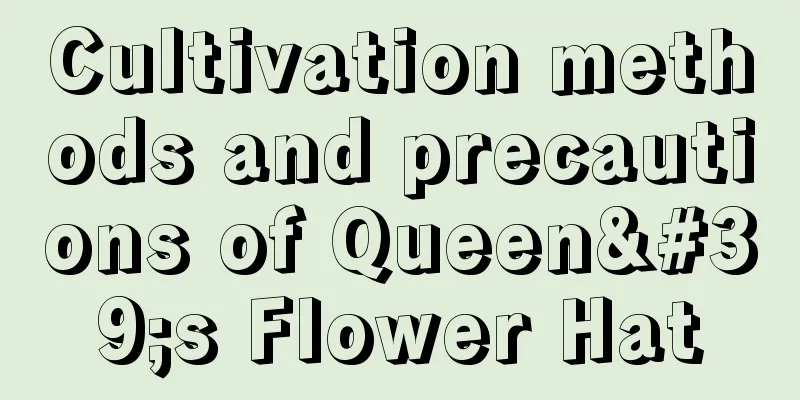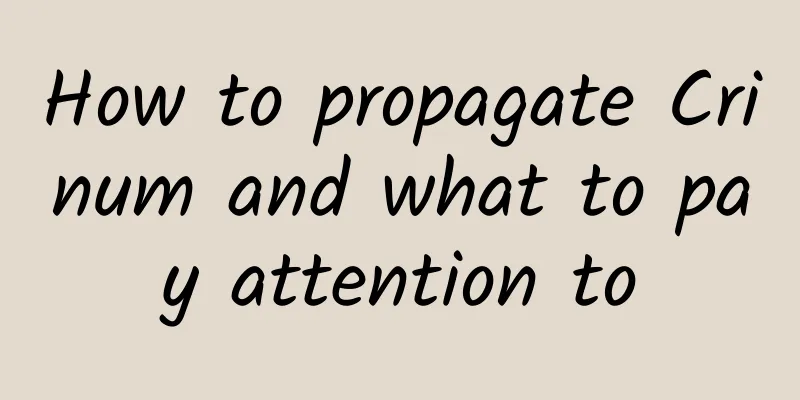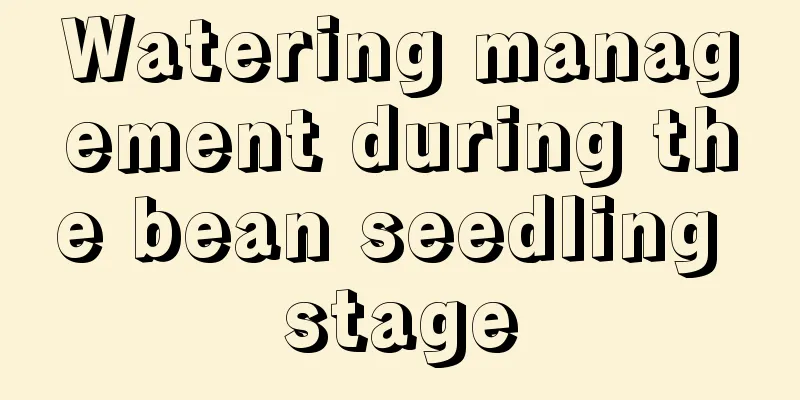Cultivation methods and precautions of Queen's Flower Hat

1. Maintenance methods1. Soil: The Queen's Flower Hat will grow better with sandy soil. Just mix sand and peat soil and add a little leaf mold. The soil should have good nutrients and drainage, and for sandy soil, try to choose coarser sand. 2. Watering: It requires very little water, even during the growing season, once a week is enough. In winter, watering twice throughout the winter is enough. When the air is dry, spray water around the flower pot to keep it moist. 3. Temperature: The most suitable temperature for its growth is 18-25℃. It should be noted that if the temperature exceeds 35℃ in summer, it will stop growing. Therefore, when the temperature is high in summer, it is best to move the plants to a cooler place for breeding. 4. Light: It has a relatively large demand for light, so when breeding it, try to let it receive enough light. If there is a lack of light, the color will fade, which is very ugly. 2. Breeding techniques1. Reproduction: Cutting propagation is easier. Cut leaves of better quality, dry them for 1-2 days, and then place them on the soil surface. Try to spray water to keep the soil moist, and it will take root soon. After the new shoots grow slowly, you can plant them. 2. Repotting: Queen's Hat generally does not need to be repotted. If it grows up and the space in the old pot is not suitable for its growth, you can change to a larger pot for cultivation. Be careful with the roots when repotting. After drying it for a day, you can put it back in the pot. 3. Problem diagnosis and treatment1. Shriveled: If the leaves at the base of the plant are shriveled, it is normal and does not require excessive treatment. If too many leaves are shriveled, it may be caused by lack of water and light. You need to replenish water in time and move the plant to a well-lit location for maintenance. 2. Black rot: It is mostly caused by "Fusarium oxysporum". If it is discovered early, remove the diseased leaves or cut off the diseased parts, don't feel sorry. Black rot develops very quickly. If you are reluctant to drop a few leaves, the entire bead will be affected. Just spray antibacterial agents on the plant and place it in a ventilated place for cultivation. IV. Other issues1. Can it be grown indoors: Queen's hat can be grown indoors, but it requires good indoor lighting and frequent ventilation. 2. Is it edible? It is not recommended to eat the Queen's Flower Hat. It is an ornamental flower, so you can just cultivate it for viewing. |
<<: Radish cultivation methods and precautions
>>: Cultivation methods and precautions of Japanese begonia
Recommend
Why did the thorns of the golden echinops turn black?
The hard thorns of golden echinops turn black - l...
What is the best way to grow roses in winter?
The beauty of roses is appreciated by countless p...
What does 11 roses mean?
1. Single-mindedness As the name suggests, 11 ros...
The role and value of gentian
Medicinal value of gentian The rhizomes of gentia...
The azaleas at home always shed leaves. Learn to understand the root problems and you don’t have to worry about it anymore.
Some azaleas will bloom in winter, so many flower...
How to prune the branches of Kalanchoe
Pruning after flowering Does the Kalanchoe need t...
The method of making the green radish climb the wall for 5 years without yellowing leaves is so simple
Want the green and lush green radish? Use beer mi...
How to prune crabapple trees
How to prune the branches of a crabapple tree It ...
How to grow aloe vera (how to grow aloe vera quickly and make it big and fat)
How to cultivate aloe vera to grow well Aloe vera...
What is the planting season for Polygonatum sibiricum?
Polygonatum sibiricum is a medicinal material wid...
Cultivation method of Huangshan Bauhinia
1. Soil Huangshan Bauhinia is suitable for cultiv...
Drink some of this if you drink Christmas cactus, and 100 flowers will bloom in autumn, and the leaves will be so fat that they will drip oil!
If you grow it like this in early autumn, the Chr...
How does Kalanchoe survive the winter?
1. Reduce watering During the winter, the Kalanch...
The efficacy and function of the rich fern
one. Greening effect 1 This plant can grow in the...
How many years does it take for jackfruit to bear fruit?
Introduction to Jackfruit Planting Jackfruit is d...









